Mostrar el registro sencillo del ítem
Anthropocene Effects: Revisiting Land and Water in Canadian and Mexican Art Histories
| dc.provenance | El documento original impreso/digital se encuentra en resguardo del Centro de Investigaciones sobre América del Norte de la Universidad Nacional Autónoma de México. Proyecto CISAN, Memoria Institucional | |
| dc.rights.license | http://ru.micisan.unam.mx/page/terminos | |
| dc.creator | Sloan, Johanne | |
| dc.date.accessioned | 2025-05-03T00:57:42Z | |
| dc.date.available | 2025-05-03T00:57:42Z | |
| dc.date.issued | 2024 | |
| dc.identifier.issn | 0186-9418 | |
| dc.identifier.uri | https://ru.micisan.unam.mx/handle/123456789/1509 | |
| dc.format | application/pdf | |
| dc.format.extent | pp. 49-55 | |
| dc.language.iso | eng | |
| dc.publisher | Universidad Nacional Autónoma de México, Centro de Investigaciones sobre América del Norte | |
| dc.relation.isformatof | ||
| dc.relation.requires | Lector de PDF | |
| dc.title | Anthropocene Effects: Revisiting Land and Water in Canadian and Mexican Art Histories | |
| dc.rights.holder | Universidad Nacional Autónoma de México | |
| dc.audience | Estudiantes | |
| dc.audience | Maestros | |
| dc.audience | Investigadores | |
| dc.coverage.placeofpublication | México | |
| dc.description.extract | Today’s Anthropocene forces us to look skeptically at the water, clouds, soil, plants, animals, and other natural phenomena that surround us, because the damage inflicted on environments, ecosystems, and living organisms is not always visible. Extending this critical gaze into the realm of art history, this essay considers how the nonhuman world of nature appears in historical works of art. In both Canada and Mexico, paintings of land and water have the status of national treasures: in the early 20th century the Canadian artists known as the “Group of Seven” turned their backs on urban life, to create vivid tableaux of natural scenery, while a few decades earlier José Maria Velasco made some of his most majestic landscape compositions, featuring the Valley of Mexico and other regions of the country. (Fig. 1) Does it matter whether the bodies of water these artists painted were polluted then, or if they are polluted now? If environmentally-damaging practices had already been set in motion, at the moment the artworks were made, should that influence how we regard these artworks today? These are some of the questions prompted by the apocalyptic teleology of the Anthropocene (p. 50). | |
| dc.educationlevel | Medio superior | |
| dc.educationlevel | Superior | |
| dc.educationlevel | Posgrado | |
| dc.identifier.bibliographiccitation | Sloan, Johanne, “Anthropocene Effects: Revisiting Land and Water in Canadian and Mexican Art Histories”, Voices of Mexico, Universidad Nacional Autónoma de México, Centro de Investigaciones sobre América del Norte, 2024, no. 123, (summer): 49-55. | |
| dc.identifier.cisan | VOM_2024_0123_0049 | |
| dc.identifier.orcid | https://orcid.org/0000-0002-6241-5688 | |
| dc.relation.issue | 123 | |
| dc.subject.unam | Humanidades | |
| dc.type.spa | artículo | |
| dc.view.accesslevel | Embargo | |
| dc.type.coar | http://purl.org/coar/resource_type/c_6501 | |
| dc.relation.hasPart | Voices of Mexico |
Ficheros en el ítem
Este ítem aparece en la(s) siguiente(s) colección(ones)
-
Artículos [3103]
MiCISAN, Repositorio Institucional
Hecho en México, todos los derechos reservados 2018. Esta página puede ser reproducida con fines no lucrativos, siempre y cuando no se mutile, se cite la fuente completa y su dirección electrónica. De otra forma, requiere permiso previo por escrito de la institución.
Sitio Web administrado por: Centro de Investigaciones sobre América del Norte • micisan@unam.mx







